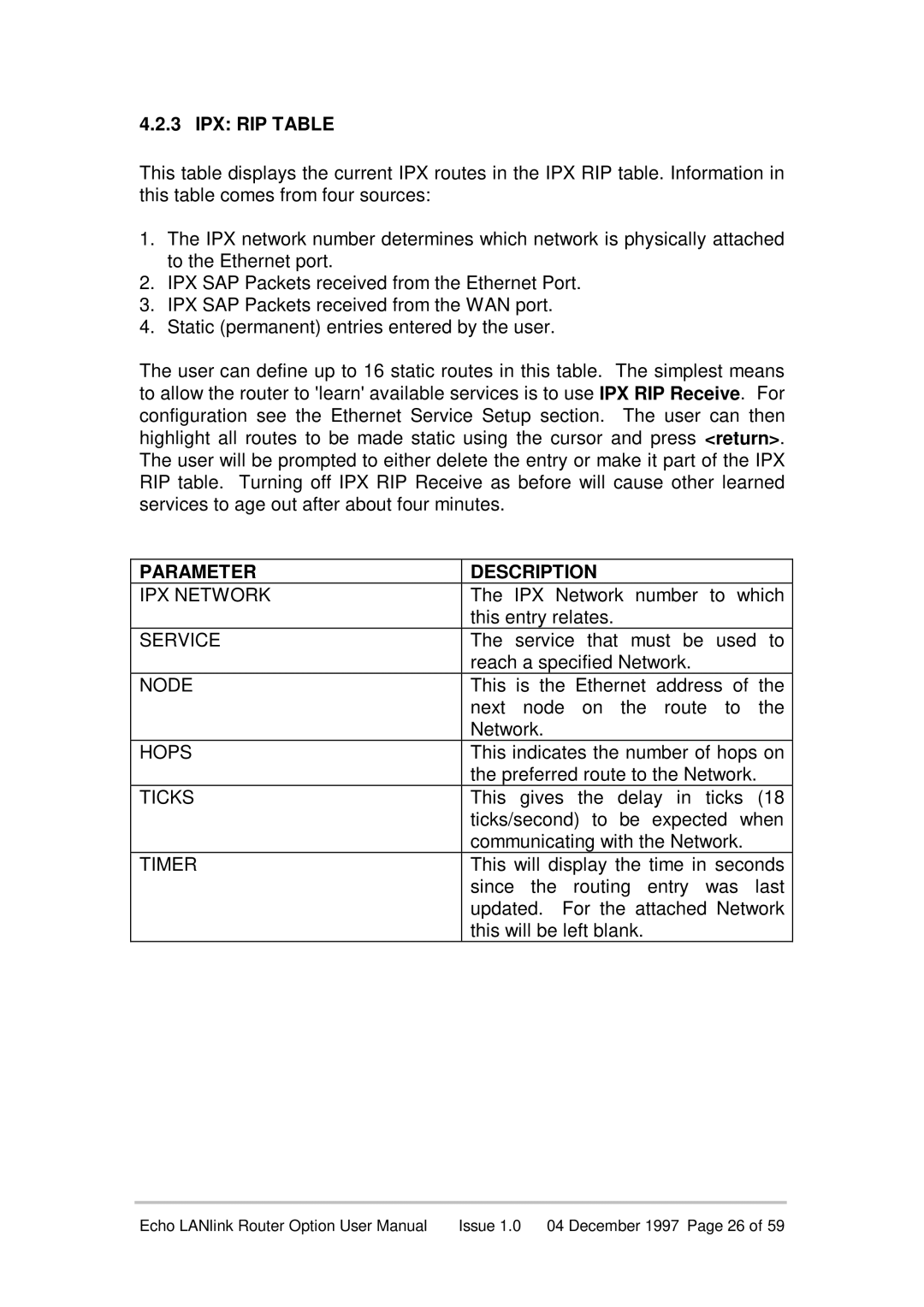4.2.3 IPX: RIP TABLE
This table displays the current IPX routes in the IPX RIP table. Information in this table comes from four sources:
1.The IPX network number determines which network is physically attached to the Ethernet port.
2.IPX SAP Packets received from the Ethernet Port.
3.IPX SAP Packets received from the WAN port.
4.Static (permanent) entries entered by the user.
The user can define up to 16 static routes in this table. The simplest means to allow the router to 'learn' available services is to use IPX RIP Receive. For configuration see the Ethernet Service Setup section. The user can then highlight all routes to be made static using the cursor and press <return>. The user will be prompted to either delete the entry or make it part of the IPX RIP table. Turning off IPX RIP Receive as before will cause other learned services to age out after about four minutes.
PARAMETER | DESCRIPTION |
IPX NETWORK | The IPX Network number to which |
| this entry relates. |
SERVICE | The service that must be used to |
| reach a specified Network. |
NODE | This is the Ethernet address of the |
| next node on the route to the |
| Network. |
HOPS | This indicates the number of hops on |
| the preferred route to the Network. |
TICKS | This gives the delay in ticks (18 |
| ticks/second) to be expected when |
| communicating with the Network. |
TIMER | This will display the time in seconds |
| since the routing entry was last |
| updated. For the attached Network |
| this will be left blank. |
Echo LANlink Router Option User Manual | Issue 1.0 04 December 1997 Page 26 of 59 |
